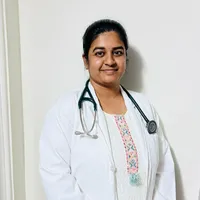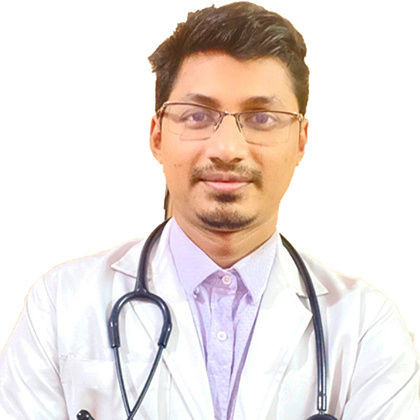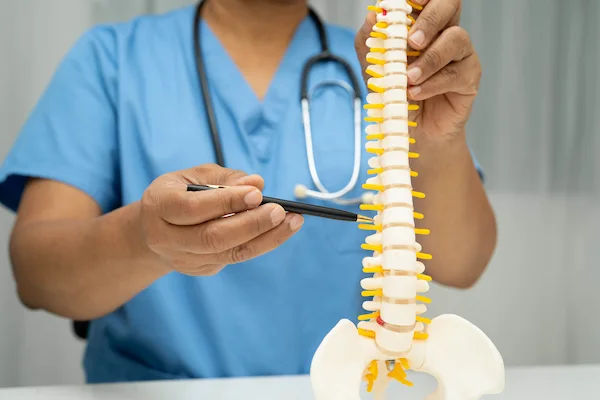Guide to New Help All Spinal Problems Live Better
Discover new, effective help for all spinal problems. This comprehensive guide offers treatments, exercises, and tips to manage pain and live better with back or neck issues

Written by Dr. D Bhanu Prakash
Reviewed by Dr. Rohinipriyanka Pondugula MBBS
Last updated on 6th Oct, 2025

Introduction
If you're living with back or neck pain, you know how it can dominate your life. For years, the options seemed limited: pain medication, basic physical therapy, or the daunting prospect of major surgery. But the landscape of spinal care has undergone a quiet revolution. Today, new help for spinal problems is not just a promise; it's a reality grounded in groundbreaking technology and a deeper understanding of the body. This guide is your roadmap to these advancements. We will move beyond temporary fixes to explore the innovative treatments that are helping people reclaim their lives with less pain and faster recovery. From non-surgical regenerative techniques to precision-guided minimally invasive surgeries, we'll demystify the options available to you. Whether you're dealing with a herniated disc, spinal stenosis, or chronic discomfort, understanding these new approaches is the first step toward finding a solution that truly works for your body and your lifestyle. Let's explore what modern medicine now offe
Understanding Your Spine: The Foundation of the Problem
Before diving into solutions, it's crucial to understand what can go wrong. Your spine is a complex structure of bones (vertebrae), discs that act as cushions, nerves, and muscles. Pain arises when any of these components are injured, degenerated, or compressed.
Common Spinal Conditions That Cause Pain
Herniated or Bulging Disc: When the soft inner material of a disc pushes out through a tear in the tougher exterior, it can press on nearby nerves, causing pain, numbness, or weakness, often radiating down an arm or leg (sciatica).
Spinal Stenosis: This is a narrowing of the spaces within your spine, which can put pressure on the spinal cord and nerves. It's often age-related and can lead to pain, numbness, and difficulty walking.
Degenerative Disc Disease: Not actually a "disease," this refers to the natural wear-and-tear of spinal discs as we age, which can cause chronic pain and stiffness.
Osteoarthritis: This affects the facet joints in the spine, leading to inflammation, pain, and the formation of bone spurs.
Why Traditional Treatments Sometimes Fall Short?
Traditional approaches like rest, oral painkillers, and basic cortisone injections often provide only temporary relief. They may mask the symptoms without addressing the underlying structural issue. This is where the newest treatments for spinal conditions come in, focusing on long-term healing and functional restoration rather than just symptom management.
Health Topic Carousel:
Doctor Speciality: General Physician
Text: Consult Top Specialists
Breakthroughs in Non-Surgical Spinal Treatments
Surgery is no longer the default next step. A host of advanced non-surgical interventions are now available, offering significant relief for many patients.
Advanced Physical Therapy and Rehabilitation
Gone are the days of generic stretching routines. Modern physical therapy is highly specialized. Therapists now use techniques like dry needling, instrument-assisted soft tissue mobilization (IASTM), and neuromuscular re-education. They create personalized plans that not only alleviate pain but also correct movement patterns and strengthen the deep core muscles that act as a natural corset for your spine, providing crucial pain management and prevention.
The Rise of Regenerative Medicine: PRP and Stem Cell Therapy
This is one of the most exciting frontiers. Regenerative medicine aims to harness your body's own healing power.
Platelet-Rich Plasma (PRP) Therapy: Concentrated platelets from your own blood are injected into the injured area (e.g., a damaged disc or arthritic facet joint). Platelets release growth factors that stimulate and enhance the body’s natural healing processes.
Stem Cell Therapy: While still largely investigational for spinal issues, stem cells (often harvested from bone marrow or adipose tissue) are being studied for their potential to regenerate damaged disc tissue and reduce inflammation.
A 2021 review in the Journal of Spine Surgery noted that these biologic treatments hold promise for treating disc degeneration, though more research is needed to standardize protocols.
Precision Pain Management: Image-Guided Injections
Injections are much more effective and safer today. Using real-time X-ray (fluoroscopy) or ultrasound guidance, doctors can now deliver medication with pinpoint accuracy to the exact source of pain—be it a nerve root, a facet joint, or the epidural space. This precision maximizes therapeutic effect while minimizing steroid dosage and risk, a significant advancement in non-surgical treatment for herniated disc and other nerve-compression issues.
The New Era of Spinal Surgery: Minimally Invasive is Key
When non-surgical options are exhausted and pain is severe, surgery may be recommended. But the concept of spine surgery has been transformed by minimally invasive techniques.
What is Minimally Invasive Spine Surgery (MISS)?
MISS involves performing surgery through small incisions, using specialized instruments and cameras. Unlike traditional "open" surgery, which requires large incisions and muscle stripping, MISS techniques work by gently separating muscles. The benefits are profound: less blood loss, reduced risk of infection, minimal muscle damage, less post-operative pain, and a dramatically shorter minimally invasive spine surgery recovery time—often allowing patients to go home the same day.
Robotic-Assisted Surgery: Unmatched Precision
Robotic systems act as a GPS for the surgeon. The surgeon plans the procedure on a 3D model of the patient's spine, and the robotic arm then guides the placement of screws and instruments with sub-millimeter accuracy. This enhances safety and improves outcomes, particularly in complex fusions. This latest technology for back pain is reducing the margin of error to nearly zero.
Artificial Disc Replacement: Preserving Motion
For certain conditions in the neck or lower back, artificial disc replacement is a motion-preserving alternative to spinal fusion. Instead of fusing vertebrae together, which limits movement, the damaged disc is replaced with an artificial device. This maintains more natural spine biomechanics and can reduce stress on adjacent levels, potentially preventing future problems. If your condition does not improve after trying conservative methods, consult a spine specialist online with Apollo24|7 to see if you are a candidate for these advanced procedures.
Powerful Daily Habits to Support Your Spinal Health
Medical interventions are only one piece of the puzzle. The best new help for spinal problems includes proactive lifestyle choices that protect your spine every day.
Ergonomics for the Modern Life: Desk, Phone, and Sleep
Desk Setup: Ensure your monitor is at eye level, your feet are flat on the floor, and your knees are at a 90-degree angle. Use a chair with good lumbar support.
Phone Use: Avoid "text neck." Hold your phone at eye level as much as possible to prevent straining your cervical spine.
Sleep: Sleep on a supportive mattress. Side sleepers should use a pillow that keeps their head neutral with their spine; back sleepers need a thinner pillow.
Core-Strengthening Exercises You Can Do at Home
A strong core is your spine's best friend. It's not about six-pack abs; it's about the deep muscles.
Planks: Builds endurance in your entire core.
Bird-Dog: Excellent for improving stability and coordination.
Pelvic Tilts: Gently strengthens the lower abdominals and relieves lower back tension.
The Role of Nutrition and Inflammation
Chronic inflammation can exacerbate spinal pain. An anti-inflammatory diet rich in omega-3 fatty acids (found in fish), antioxidants (berries, leafy greens), and turmeric can help manage pain. Apollo24|7 offers a convenient home collection for tests like vitamin D or HbA1c, which can provide insights into factors affecting your bone health and inflammation levels.
Health Topic Carousel:
Doctor Speciality: General Physician
Text: Consult Top Specialists
Conclusion
Living with spinal pain doesn't have to be normal. The field of spinal care is evolving at an unprecedented pace, offering new help for spinal problems that is more effective, less invasive, and more patient-centric than ever before. From regenerative injections that kickstart your body's healing to surgical techniques that minimize disruption, the goal is the same: to get you back to the life you love, with a stronger, healthier spine. The power to live better starts with being an informed advocate for your own health. Use this knowledge to ask the right questions, explore the full spectrum of options, and partner with a medical team that embraces these modern approaches. Your journey to lasting relief begins today.
Frequently Asked Questions (FAQs) About New Spinal Treatments
1. What is the success rate of regenerative medicine like PRP for back pain?
A. Success rates vary depending on the condition and the individual. Studies show that PRP can be effective in reducing pain and improving function for conditions like facet joint arthritis and mild to moderate disc degeneration, with many patients experiencing benefits for a year or more. It's best for those seeking an alternative to repeated steroid injections.
2. Am I a candidate for artificial disc replacement?
A. Candidacy depends on factors like the location of the problem (it's most common in the cervical and lumbar spine), the severity of degeneration, your bone quality, and whether you have certain conditions like osteoporosis. A detailed evaluation by a spine surgeon is necessary.
3. How long is the recovery after minimally invasive spine surgery?
A. Recovery is significantly faster than traditional surgery. Many patients go home the same day or after one night. While returning to heavy labor may take a few months, most people can return to desk work and light activities within a few weeks.
4. Are these new treatments covered by insurance?
A. Coverage varies widely. While minimally invasive surgeries are typically covered, newer treatments like PRP and stem cell therapy may be considered investigational by some insurers and often require out-of-pocket payment. Always check with your insurance provider.
5. When should I see a doctor for back pain?
A. You should consult a doctor if your pain is severe, doesn't improve with rest, radiates down your legs or arms, or is accompanied by weakness, numbness, or bowel/bladder changes. If symptoms persist beyond two weeks, consult a doctor online with Apollo24|7 for further evaluation.
Consult Top Specialists for Personalised Tips

Dr. Rajib Ghose
General Physician/ Internal Medicine Specialist
25 Years • MBBS
East Midnapore
VIVEKANANDA SEBA SADAN, East Midnapore

Dr Puppala Anirudh
General Physician/ Internal Medicine Specialist
10 Years • MBBS, MD
Nizamabad
Sri Srinivasa hospital, Nizamabad
Dr. Paras Gangwal
General Physician/ Internal Medicine Specialist
28 Years • MBBS,MD General Medicine
Delhi
Dr Paras Gangwal Clinic, Delhi

Dr. Vishal Kumar H
General Physician/ Internal Medicine Specialist
8 Years • MBBS, master class in critical care medicine, Advanced Post Graduate Diploma in Non Invasive Cardiology, certificate course in Cardiovascular Disease & Stroke, Certificate course in Common Mental Disorder
Bengaluru
Apollo Clinic, Basavanagudi, Bengaluru

Dr. Harshendra Jaiswal
General Physician/ Internal Medicine Specialist
12 Years • MBBS , MD (General medicine)
Kolkata
108 DHANA DHANVANTARI Clinic, Kolkata
(25+ Patients)
Consult Top Specialists

Dr. Rajib Ghose
General Physician/ Internal Medicine Specialist
25 Years • MBBS
East Midnapore
VIVEKANANDA SEBA SADAN, East Midnapore

Dr Puppala Anirudh
General Physician/ Internal Medicine Specialist
10 Years • MBBS, MD
Nizamabad
Sri Srinivasa hospital, Nizamabad
Dr. Paras Gangwal
General Physician/ Internal Medicine Specialist
28 Years • MBBS,MD General Medicine
Delhi
Dr Paras Gangwal Clinic, Delhi

Dr. Vishal Kumar H
General Physician/ Internal Medicine Specialist
8 Years • MBBS, master class in critical care medicine, Advanced Post Graduate Diploma in Non Invasive Cardiology, certificate course in Cardiovascular Disease & Stroke, Certificate course in Common Mental Disorder
Bengaluru
Apollo Clinic, Basavanagudi, Bengaluru

Dr. Harshendra Jaiswal
General Physician/ Internal Medicine Specialist
12 Years • MBBS , MD (General medicine)
Kolkata
108 DHANA DHANVANTARI Clinic, Kolkata
(25+ Patients)
